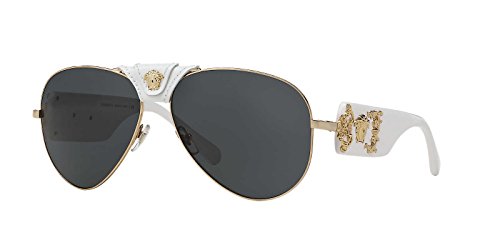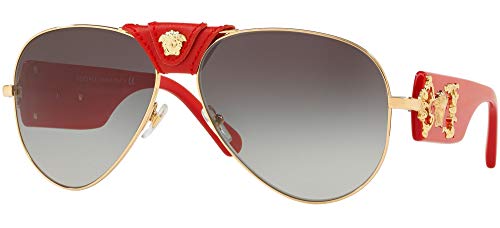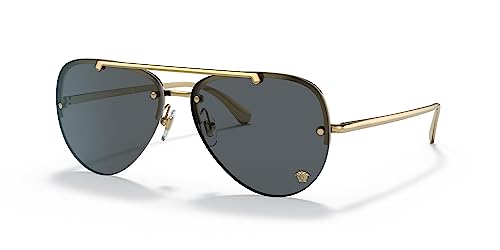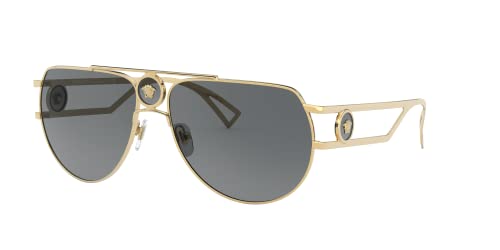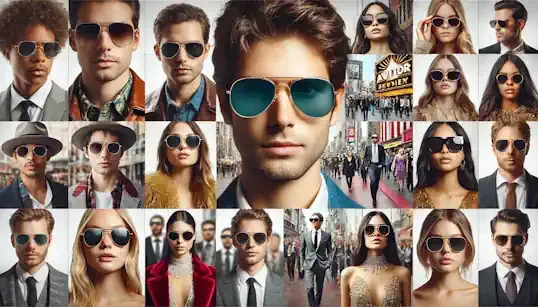Aviator sunglasses, they're eyewear royalty. Instantly recognizable, perpetually cool, and universally admired. From classic movies to modern fashion runways, they hold a consistent place as a symbol of effortless style. There's an undeniable allure to aviators, a certain je ne sais quoi that makes them endlessly desirable. But for many, despite this widespread admiration, a nagging question lingers, a silent uncertainty that hovers between desire and decision: “Could I actually pull them off?” It’s a question whispered in dressing rooms, pondered in front of mirrors, and typed into countless online search bars: “Do aviator sunglasses look good on my face shape?”
The fear is real, and it's understandable. Aviator sunglasses, with their distinctive shape and inherent boldness, can feel like a statement piece, and with statement pieces comes the worry of whether they will truly flatter your unique facial contours. Will aviators enhance your features, or will they instead highlight perceived imperfections, create unflattering proportions, or simply look… awkward, unbalanced, or just plainly “not right”? The sheer variety of advice online, often conflicting and confusing, can further amplify this uncertainty. Are aviators only for certain face shapes? Are there strict “rules” to follow? Must you possess a specific jawline, cheekbone structure, or brow shape to truly rock this iconic style?
The good news, and it’s genuinely good news, is that aviator sunglasses are, in fact, surprisingly versatile. While certain styles may indeed be more naturally harmonious with specific face shapes, the myth of aviators being exclusively for a select few is simply untrue. With a little know-how, a dash of personalized guidance, and a confident spirit, everyone can find a pair of aviators that truly shines, a pair that complements their individual features, enhances their personal style, and unlocks that coveted “flawless” look we all secretly desire. This guide is your personalized roadmap to discovering your perfect aviator fit, carefully tailored to your unique face shape, and designed to banish those lingering doubts and empower you to confidently embrace this timeless eyewear style. We will demystify the process of choosing aviator sunglasses, moving beyond generic advice and providing face shape-based recommendations that are both practical and easy to understand. While offering these tailored suggestions, it’s equally important to emphasize that these are guidelines, helpful starting points, and never rigid rules carved in stone. Fashion, after all, is not a mathematical equation; it is an art form, a mode of self-expression, and ultimately, about how you feel in what you wear. Therefore, we will not only guide you towards flattering aviator styles based on face shape, but also, and crucially, empower you to embrace your own personal style, to experiment with trends, and to understand that confident wear, self-assurance, and owning your individual look are the ultimate keys to achieving a truly flattering and effortlessly stylish aviator aesthetic. Get ready to banish eyewear anxieties, embrace your unique features, and discover the perfect pair of aviator sunglasses that will have you stepping out with confidence and flawless style, every single time.
Before we delve into specific aviator styles and their flattering qualities for different face shapes, it’s essential to first understand the landscape of facial contours and learn how to identify your own unique facial architecture. Decoding your face shape isn't about adhering to rigid categories or striving for some idealized form; it's about gaining a better understanding of your natural features, your proportions, and how eyewear can best complement your inherent beauty. While facial shapes exist on a spectrum and many faces are beautiful blends of different categories, understanding the basic archetypes provides a valuable framework for choosing flattering eyewear styles. Let’s briefly explore the common face shape categories, keeping our descriptions concise and visually understandable, acting as a starting point for your personal exploration:
First, we have the Round Face. Characterized by its soft curves and lack of sharp angles, a round face typically features fuller cheeks and a rounded chin and forehead. The width and length of a round face are generally fairly similar, creating a circular outline. Imagine a gentle, continuous curve, lacking strong lines or prominent angles.
Next is the Oval Face, often considered the “harmonious” or “balanced” face shape in traditional beauty standards. An oval face is characterized by its balanced proportions, with the length being slightly greater than the width, and a gently rounded chin and forehead. The cheekbones are often subtly prominent, and the overall outline is soft and gently elongated.
Then there’s the Square Face, defined by its strong, angular features and prominent lines. A square face typically features a strong, defined jawline and a broad, somewhat angular forehead. The width of the forehead, cheekbones, and jawline are often similar, creating a more geometric and structured facial outline.
The Heart Face, sometimes referred to as an inverted triangle, is characterized by a wider forehead that gradually narrows down to a more pointed or delicate chin. The cheekbones are often prominent, and the face shape resembles an upside-down triangle, with the widest point at the forehead and temples.
In contrast, the Triangle Face, or base-down triangle, presents the opposite proportions of the heart face. A triangle face is defined by a narrower forehead that widens towards a more prominent jawline. The jawline is often the widest part of the face, creating a triangular shape that widens downwards.
Finally, we have the Oblong Face, also known as a rectangle face shape. An oblong face is characterized by its length being significantly greater than its width, with a relatively similar width maintained from the forehead to the jawline. The chin and forehead may be rounded or subtly angular, but the overall impression is one of vertical elongation.
Now that we have a basic understanding of the common face shape categories, the crucial step is to determine your own face shape. Thankfully, identifying your face shape doesn't require complex measurements or professional analysis; there are several practical, easy-to-follow methods you can use right at home:
One of the most straightforward and visually intuitive methods is The Mirror Method. Stand directly in front of a mirror in a well-lit room, ensuring your hair is pulled back away from your face. Using a non-permanent marker, such as a dry-erase marker or even a lipstick, carefully trace the outline of your face directly onto the mirror. Start at your hairline, trace down around your temples, cheekbones, jawline, and chin, and then back up to your hairline, creating a complete outline of your facial shape. Step back and analyze the shape you've traced on the mirror. Does it most closely resemble a circle, an oval, a square, a heart, a triangle, or a rectangle? This visual tracing method provides a direct and tangible representation of your face shape, making it easier to identify its dominant characteristics.
Another effective method, particularly useful for those who prefer a digital approach, is The Photo Method. Take a straight-on photograph of your face in good lighting, again ensuring your hair is pulled back so your face is fully visible. You can then either digitally trace the outline of your face in a photo editing program, or simply print out the photograph and physically trace the outline with a pen or marker. Analyzing the traced outline on the photograph provides a similar visual assessment as the mirror method, allowing you to compare your face shape to the common categories and identify its closest resemblance.
Beyond these tracing methods, you can also determine your face shape through Feature Analysis, carefully observing and evaluating key aspects of your facial features and proportions. Focus on the following elements: Forehead Width: Is your forehead broad or narrow in relation to the rest of your face? Cheekbone Prominence: Are your cheekbones the widest part of your face, or are they less defined? Jawline Shape: Is your jawline rounded, angular, or strong and defined? Chin Shape: Is your chin rounded, pointed, square, or receding? Face Length vs. Width Ratio: Is your face noticeably longer than it is wide, or are the length and width more similar? By consciously analyzing these features and comparing them to the descriptions of each face shape category, you can often discern your face shape through careful observation and deduction.
It is crucial to remember, as you embark on this face shape identification journey, that it’s not about achieving perfect categorization or rigidly fitting yourself into a single box. Most faces are, in reality, beautiful and unique blends of different shapes and characteristics. Don't stress about perfectly aligning with every single descriptor of a particular face shape. Instead, focus on identifying your dominant facial features, the most prominent aspects of your facial contours, and determine which of the face shape categories your face most closely resembles in its overall impression. This process of identification is meant to be a helpful guide, a starting point for understanding eyewear styles, not a rigid rulebook dictating what you can and cannot wear. Embrace the individuality of your features, recognize that beauty lies in diversity, and use this face shape knowledge as a tool for informed and confident style exploration, rather than a source of limitation or self-consciousness.
Now that you have a better understanding of face shapes and have hopefully identified your own, we can delve into the heart of the matter: the face shape guide to aviator styles, offering tailored recommendations to unlock flattering fits for every unique face. Remember, these are guidelines, suggestions based on general principles of balance and proportion, but ultimately, personal style and confidence reign supreme. Consider these recommendations as a starting point, a source of inspiration, and a foundation upon which to build your own individual aviator style journey.
Let's begin with the Round Face. The primary aim when selecting aviator sunglasses for a round face is to introduce definition and angles, creating a visual contrast to the face's inherent softness and curves. Angular Aviators are a fantastic choice for round faces. Slightly squared-off aviator lenses, rather than purely rounded teardrops, and aviator frames with geometric details, such as a more angular brow bar or temple design, can add welcome structure and visual interest, balancing the roundness of the facial contours. Aviators with Stronger Brow Lines, featuring more defined brow bars or a more prominent frame top edge, also work well. These stronger lines create a sense of verticality and definition, helping to elongate the face and break up the circularity. For round faces, it's generally advisable to Avoid overly round or circular aviator lenses. These shapes may unfortunately accentuate the face’s roundness, potentially creating a less defined or balanced look. When styling aviators for a round face, consider opting for slightly bolder frame thickness. A medium to slightly thicker frame can provide more visual weight and definition, further enhancing the angularity. Darker lens tints, such as classic grey or black, can also contribute to a more defined and structured look, adding visual contrast against the softness of the face.
For those blessed with an Oval Face, often cited as the most versatile face shape, the world of aviator sunglasses truly opens up. The balanced proportions of an oval face mean that it can generally carry off a wide range of eyewear styles with ease, including a vast spectrum of aviator designs. Classic Aviators, in their traditional teardrop shape, work beautifully on oval faces. The balanced proportions of the oval face perfectly complement the iconic silhouette of the classic aviator, creating a harmonious and timeless look. Oval faces are also ideally suited to Experiment with Variations. Feel free to explore different aviator frame thicknesses, lens colors, and subtle style variations. From delicate metal frames to bolder acetate designs, from mirrored lenses to gradient tints, oval faces can often handle a wider range of aviator styles without appearing unbalanced. The key styling tip for oval faces with aviators is to simply Consider Proportionality. While oval faces are versatile, ensure that the size of the aviator sunglasses is still balanced with your overall facial features. Avoid frames that are excessively oversized and overwhelm your face; maintain proportional harmony for the most flattering effect. Oval faces have the enviable freedom to truly explore and express their personal style through the diverse world of aviator sunglasses.
The Square Face, with its strong, angular features, benefits from aviator styles that introduce softness and curves, counteracting the inherent angularity and creating a more balanced and harmonious look. Rounded Aviators are an excellent choice for square faces. Softer, more circular aviator lenses, in contrast to the angular lines of the square face, create a visually pleasing counterpoint, softening the jawline and cheekbones and adding a touch of gentle curvature. Aviators with Curved Brow Bars also work effectively. Curved lines in the brow bar or frame top subtly soften the brow and jawline, further contributing to a more balanced and less geometrically sharp appearance. For square faces, it’s generally best to Avoid overly geometric or sharply squared aviator styles. These styles may unfortunately accentuate the existing angularity of the square face, potentially creating a look that feels overly harsh or severe. When styling aviators for a square face, thinner frames can often be particularly elegant, allowing the softer lens shape to be the primary focus, rather than adding more visual weight with a thick frame. Consider lighter lens tints, such as soft browns or greys, to further contribute to a softer and more approachable overall look, complementing the softening effect of the rounded aviator lenses.
The Heart Face, with its wider forehead and narrower chin, requires aviator styles that create balance by visually broadening the lower portion of the face or drawing attention to the lower eye area. Aviators with the Classic Teardrop Lens Shape are inherently flattering for heart faces. The teardrop lens shape is naturally wider at the top, mirroring the wider forehead of a heart face, and then narrows towards the bottom, gently following the narrowing contour of the chin, creating a sense of visual harmony and balance. Bottom-Heavy Aviators, styles where the lenses are subtly wider or more emphasized at the bottom portion of the frame, can also be effective. This slight visual weight at the bottom of the lens can add a touch of visual width to the narrower chin area, further contributing to facial balance and creating a more proportionate overall appearance. For heart faces, it is generally advisable to Avoid overly top-heavy or very embellished aviator styles. Frames that are excessively wide or heavily detailed at the top, or those that draw too much attention to the brow line, may further emphasize the wider forehead and potentially unbalance the face shape. When styling aviators for a heart face, lighter frames, in delicate metals or light-colored acetates, can often be particularly flattering, preventing the eyewear from feeling too heavy or dominating on the face. Delicate details and subtle embellishments, rather than bold or overly dramatic styles, tend to work best in complementing the delicate features of a heart face shape.
The Triangle Face, with its narrower forehead and wider jawline, benefits from aviator styles that add visual width to the upper portion of the face, balancing the broader jawline and creating a more proportionate overall appearance. Aviators with Strong Brow Bars are particularly effective for triangle faces. A stronger, more prominent brow bar, or a double brow bar design, can add visual weight and width to the forehead area, drawing the eye upwards and creating a sense of balance with the wider jawline below. Top-Heavy Aviators, styles where the upper portion of the lens or frame is slightly wider or more emphasized than the lower portion, serve a similar purpose. This wider top portion of the lens helps to visually broaden the forehead, counteracting the wider jawline and creating a more balanced facial shape. Aviators with Detailing at the Top Frame, featuring embellishments, color accents, or design details along the top edge of the frame, can also effectively draw attention upwards and add visual interest to the narrower forehead area. When styling aviators for a triangle face, bolder frames, in thicker acetates or more substantial metals, can often work well, providing enough visual presence to balance the stronger jawline. Consider aviator styles with color accents, patterns, or design details concentrated on the upper portion of the frame to further enhance the desired effect of adding visual width and interest to the forehead area.
Finally, the Oblong Face, characterized by its vertical elongation, benefits from aviator styles that introduce visual width, breaking up the length and creating a more balanced and proportionate appearance. Oversized Aviators are often a flattering choice for oblong faces. Larger frames, particularly those that extend slightly wider than the face at the temples, can add horizontal width, effectively breaking up the vertical length of the oblong face and creating a more balanced overall shape. Aviators with Bold Frame Details, such as thicker frames, bolder colors, or interesting temple designs that extend outwards, also contribute to adding visual weight and width to the face, counteracting the elongated vertical line. For oblong faces, it's generally advisable to Avoid very small or narrow aviator styles. These styles may unfortunately further elongate the face, potentially creating a less balanced or proportionately harmonious look. When styling aviators for an oblong face, thicker frames, in acetate or substantial metals, are generally more flattering than very thin, delicate frames. Bolder lens colors or mirrored finishes can also add visual weight and horizontal interest, further contributing to a more balanced and less elongated appearance. Styles that draw attention to the horizontal plane, rather than emphasizing vertical lines, are generally the most flattering for oblong face shapes.
While these face shape guidelines offer valuable starting points for finding your perfect aviator fit, it’s absolutely crucial to remember that they are just that: guidelines, helpful suggestions, and not rigid rules to be strictly adhered to. Fashion, in its most empowering form, is about self-expression, about personal style, about how you feel in what you wear, and how you choose to present yourself to the world. Rigidly confining yourself to face shape “rules” can stifle creativity, limit your style exploration, and ultimately detract from the joy of expressing your individuality through fashion. These face shape recommendations are valuable starting points, helpful guidelines to consider as you begin your aviator journey. But they are not unbreakable rules carved in stone. Fashion, ultimately, is about self-expression, personal style, and how you feel in what you wear. The power of personal style cannot be overstated. Your individual aesthetic preferences, your wardrobe choices, and the overall vibe you wish to project are equally, if not more, important than strictly adhering to face shape “rules.” Consider your existing wardrobe and personal style aesthetic. Do you gravitate towards classic and understated elegance? Then perhaps a timeless metal frame aviator in a neutral tone, even if technically “against” your face shape guideline, might be the perfect expression of your style. Do you prefer a bolder, more fashion-forward approach? Then perhaps a thick acetate aviator in a statement color, even if traditionally “not recommended” for your face shape, might be exactly the right choice to express your personality.
Furthermore, current trends in eyewear, and fashion in general, are constantly evolving, and incorporating trendy elements into your aviator style can instantly modernize even the most classic designs. Consider current trends in frame materials, lens colors, and overall eyewear silhouettes. Integrating these trendy elements into your aviator choice can make even traditionally “unflattering” styles feel incredibly fresh and relevant. Perhaps oversized aviators are having a moment in fashion, regardless of face shape guidelines; embracing this trend with confidence might override any perceived “rules” and create a powerfully stylish look. Ultimately, and perhaps most importantly, confidence is the ultimate flattering factor. The most crucial ingredient in achieving “flawless style” with aviator sunglasses – or any eyewear, for that matter – is confidence. When you wear something you genuinely love, and you wear it with assurance and self-belief, that confidence radiates outwards, transforming even the most theoretically “unflattering” pieces into stunningly stylish expressions of your personal self. Wear your chosen aviators with pride, own your look, and don’t be afraid to break the rules, experiment with unexpected styles, and ultimately, have fun with your eyewear choices. If you are still feeling uncertain or overwhelmed by the vast world of aviator styles, and if you crave personalized, expert guidance, consider seeking professional advice. Eyewear stylists at optical stores, or even eye care professionals who often possess a keen eye for style alongside their vision expertise, can offer valuable personalized recommendations based on your face shape, personal style, and current trends, helping you to narrow down your options and find that truly perfect pair. However, view professional advice as an optional step, a helpful resource if desired, not a necessity for achieving aviator perfection.
In conclusion, finding your perfect aviator fit is a journey of self-discovery, a blend of understanding general guidelines, exploring diverse styles, and ultimately, embracing your own unique sense of personal style and confident self-expression. Remember, “your perfect aviator fit” is inherently personal; it’s not a rigid formula to be followed, but a harmonious balance to be discovered between your facial features, your style preferences, and the diverse world of aviator sunglasses. Face shape guidelines offer a valuable starting point, providing helpful suggestions for styles that often flatter specific facial contours. Consider the design elements of aviator sunglasses – lens shape, frame thickness, brow bar details – and how these elements might interact with your unique features. But above all, prioritize your own personal style, embrace current trends that resonate with you, and remember that confidence is the ultimate accessory, the most flattering element of any look. Your perfect pair of aviator sunglasses is out there, waiting to be discovered

